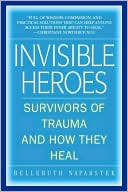Category Books
- Fiction Books & Literature
- Graphic Novels
- Horror
- Mystery & Crime
- Poetry
- Romance Books
- Science Fiction & Fantasy
- Thrillers
- Westerns
- Ages 0-2
- Ages 3-5
- Ages 6-8
- Ages 9-12
- Teens
- Children's Books
- African Americans
- Antiques & Collectibles
- Art, Architecture & Photography
- Bibles & Bible Studies
- Biography
- Business Books
- Christianity
- Computer Books & Technology Books
- Cookbooks, Food & Wine
- Crafts & Hobbies Books
- Education & Teaching
- Engineering
- Entertainment
- Foreign Languages
- Game Books
- Gay & Lesbian
- Health Books, Diet & Fitness Books
- History
- Home & Garden
- Humor Books
- Judaism & Judaica
- Law
- Medical Books
- New Age & Spirituality
- Nonfiction
- Parenting & Family
- Pets
- Philosophy
- Political Books & Current Events Books
- Psychology & Psychotherapy
- Reference
- Religion Books
- Science & Nature
- Self Improvement
- Sex & Relationships
- Social Sciences
- Sports & Adventure
- Study Guides & Test Prep
- Travel
- True Crime
- Weddings
- Women's Studies
Invisible Heroes: Survivors of Trauma and How They Heal » (ANN)

Authors: Belleruth Naparstek, Robert C. Scaer
ISBN-13: 9780553383744, ISBN-10: 0553383744
Format: Paperback
Publisher: Random House Publishing Group
Date Published: December 2005
Edition: ANN
Author Biography: Belleruth Naparstek
Belleruth Naparstek, L.I.S.W., is a psychotherapist and the creator of the bestselling Health Journeys series of guided-imagery audio programs currently used in more than 1,500 hospitals and clinics. Her programs have been distributed by the Veterans Administration, Oklahoma City disaster services, Columbine High School, and the Red Cross, among many others. A regular speaker at conferences nationwide, she is also the author of Staying Well With Guided Imagery and Your Sixth Sense.
Book Synopsis
If you or someone you love has suffered a traumatic event, you know the devastating impact it can have on your life and your spirit. Life-threatening accidents, illnesses, assaults, abusive relationships—or a tragedy like 9/11—all can leave deep emotional wounds that persist long after physical scars have healed. Survivors become “invisible heroes,” courageously struggling to lead normal lives in spite of symptoms so baffling and disturbing that they sometimes doubt their own sanity.
Now there is new hope for the millions affected by posttraumatic stress disorder (PTSD). Drawing on more than thirty years’ experience as a therapist and on the most recent cutting-edge research, Belleruth Naparstek presents a clinically proven program for recovery using the potent tool of guided imagery. She reveals how guided imagery goes straight to the right side of the brain, where it impacts the nonverbal wiring of the nervous system itself, the key to alleviating suffering.
Filled with the voices of real trauma survivors and therapists whose lives and work have been changed by this approach, Invisible Heroes offers:
• New understanding of the physical, cognitive, emotional, and behavioral effects of PTSD, who is most susceptible, and why symptoms can get worse rather than better with time
• Important insights into how the brain and body respond to trauma, why conventional talk therapy can actually impede recovery, and why the nonverbal, image-based right brain is crucial to healing
• A step-by-step program with more than twenty scripts for guided-imagery exercises tailored to the three stages of recovery, from immediate relief of anxiety attacks, flashbacks, nightmares, and insomnia, to freedom from depression and isolation, to renewed engagement with life
• A helpful guide to the best of the new imagery-based therapies, and how to incorporate them into an overall recovery plan
Belleruth Naparstek concludes with the inspiring words of survivors who have found their way back to peace, purpose, and a deep joy in living. Her compassionate, groundbreaking book can lead you and those in your care to the same renewal and healing.
Publishers Weekly
In the wake of 9/11, there was much media coverage of post-traumatic stress disorder, or PTSD-the long-term stress response whose symptoms include chronic pain, nightmares and panic attacks-and how to treat it. Naparstek, a therapist for more than 30 years, is an advocate of guided imagery, as opposed to talk therapy, and in this book she uses case histories to illustrate how it works; she also looks at recent research on the brain that shows why this method is effective and offers step-by-step instructions on using guided imagery, which she defines as "deliberate, directed daydreaming," for healing trauma. According to Naparstek, trauma damages the left brain, which is language oriented, and talking about the trauma can actually worsen symptoms. Imagery, on the other hand affects the right brain, the seat of the emotions. Guided imagery is "fast, powerful, costs little or nothing," says the author; it can be done alone or in groups, with the help of tapes that walk the stress victim through the process of finding images that help heal the trauma. Clinicians will find the entire book useful; people seeking help may not need explanations of the biochemical processes underlying PTSD, but will respond to Napartek's passionate advocacy of a simple, gentle healing method. (Aug.) Copyright 2004 Reed Business Information.
Table of Contents
Subjects
 Diseases & Disorders
Diseases & Disorders  Psychological Disorders
Psychological DisordersNew Age & Spirituality
 Healing
Healing  Mental & Spiritual Healing
Mental & Spiritual HealingSelf Improvement
 Emotional Healing
Emotional Healing  Coping & Healing
Coping & HealingSelf Improvement
 Personal Growth
Personal Growth  Creativity
CreativitySelf Improvement
 Psychological Self-Help
Psychological Self-Help  Psychological Self - Help - General & Miscellaneous
Psychological Self - Help - General & MiscellaneousSelf Improvement
 Psychological Self-Help
Psychological Self-Help  Stress & Anxiety Management - Self - Help
Stress & Anxiety Management - Self - HelpSelf Improvement
 See All
See All  Self - Improvement
Self - Improvement
